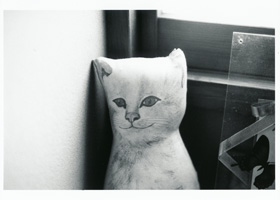
命が命に出会う旅 (English and German below)
舞踏とは、
今から約70年前に土方巽、大野一雄を中心に生み出された、戦後の日本を代表する前衛的な舞踊芸術です。それまでの西洋のダンスは、若さや美を追求するのが主流だったのに対して、舞踏は、内なるものとの出会い、生きることの喜びと悲しみ、自然や宇宙、美だけではなく醜をも含む、人間の存在そのものを探求することなどを特徴としています。また、舞踏はダンスのみならず、古今東西の芸術、文化、思想、歴史、宗教など、およそ人間が生きる上でのありとあらゆる問題と深く関わりながら、新たな深化、発展を続けています。現在、世界にはたくさんの舞踏家がおり、その数だけ様々な舞踏の解釈があります。
「ある者は光を踊り、またある者は闇を踊る。」
舞踏とは、決まったジャンルや特定のスタイルではなく、一人一人の命のカタチ、魂の言葉なのです。
A journey that connects one life to another
Butoh is an avant-garde performance art that represents post-war Japanese art world. Its origins have been attributed by Tatsumi Hijikata and Kazuo Ohno some 70 years ago. Until the arrival of Butoh, Japanese dance scene was predominated by the conventional Western style dancing, which primarily aims at the expression of youthfulness and aesthetic. In contrast, Butoh is distinguished by its attempts to embody all aspects of human- life, encompassing both good and evil; and conscious and subconscious. These include inner sorrow, private experiences, life and death, dream world, and even one's fetal experience.
Butoh consistently evolves itself as its inspirations stem not limited from dance world, but from all other factors that are intimately linked to one's life, such as the artistic expressions of all ages and cultures, thoughts, histories, and religions. At present, there are numbers of Butoh dancers all over the world, embodying his/her unique interpretation of the Butoh. Therefore, the number of the Butoh dancers represents the number of the interpretation of Butoh. One dancer may perform the light, and another the darkness.
Butoh is not limited by a single style of expression. It is an embodiment of each dancer's life, and the expression of his/her soul.
Butoh ist wie eine Reise, auf der eine Seele eine andere trifft.
Es ist ein Tanz, eine avantgar-distische Performance- Kunst, deren Wurzeln im deutschen Ausdruckstanz der zwanziger Jahre liegen. In Japan wurde Butoh nach dem Zweiten Weltkrieg durch Tatsumi Hijikata und Kazuo Ohno ins Leben gerufen und zur Aufführung gebracht. Bis dahin war die japanische Tanzszene von konventionellen westlichen Tanzstilen dominiert. Deren Absicht war es, Jugend und Ästhetik auszudrücken. Butoh dagegen versucht, alle Aspekte des menschlichen Lebens einzubeziehen - das Gute wie das Böse, das Bewusste und das Unbewusste. Eigene, schicksalhafte Erfahrun-gen, Kummer und Träume, Leben und Tod bestimmen und variieren die Tanzform.
Butoh entwickelt sich ständig weiter; die Inspirationen kommen nicht nur aus der Welt des Tanzes, sondern auch aus anderen Bereichen der Kunst, aus Mythen und Religionen, aus der gesamten Menschheitsgeschichte. In der ganzen Welt gibt es mittlerweile Butoh-Tänzer mit jeweils eigenen Interpretationen, etwa von Licht und Dunkelheit. Butoh ist nicht auf eine Darstellungsweise festgelegt: Butoh spiegelt das Leben des Tänzers wider;
Butoh ist der Ausdruck seiner Seele; Butoh ist seine stille Stille ….